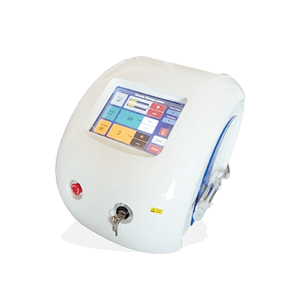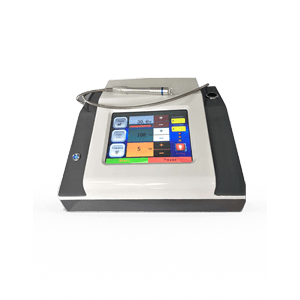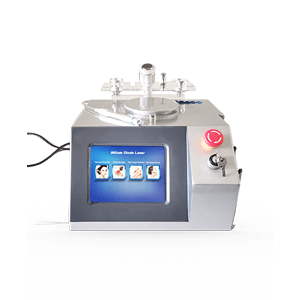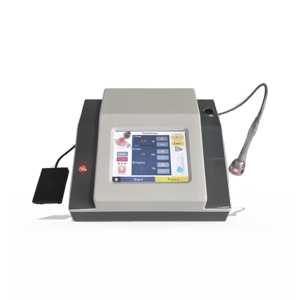Vascular & Leg Veins
Leg veins, spider veins, and other visible benign vascular lesions are common aesthetic conditions that patients seek treatment for both medical and cosmetic reasons. Lasers and other light-based technologies enable the effective treatment of leg veins and vascular lesions by inducing vessel collapse through coagulation with minimal damage to adjacent structures.
Varicose Veins
Varicose veins are swollen, twisted veins that you can see just under the surface of the skin. These veins usually occur in the legs; however, they can also form in other parts of your body. Varicose veins are a common condition and usually cause few signs or symptoms. In some cases, varicose veins may cause complications, such as mild to moderate pain, blood clots, or skin ulcers.
Veins are blood vessels that carry blood from your body’s tissues to your heart. The heart pumps the blood to your lungs to pick up oxygen. The oxygen-rich blood is then pumped out to your body through your arteries. From your arteries, the blood flows through tiny blood vessels called capillaries, where it gives up its oxygen to the body’s tissues. Your blood then returns to your heart through your veins to pick up more oxygen.
Veins have one-way valves that help keep blood flowing toward your heart. If your valves are weak or damaged, blood can back up and pool in your veins. This causes the veins to swell, which can lead to varicose veins. A number of factors may increase your risk for varicose veins, including family history, age, gender, pregnancy, overweight or obesity, and lack of movement.
Varicose veins are treated with lifestyle changes and medical procedures. The goals of treatment are to relieve symptoms, prevent complications, and improve appearance.

Vein Problems Related to Varicose Veins
A number of vein problems are related to varicose veins, such as telangiectasias, spider veins, varicoceles, and other vein problems.
Telangiectasias
Telangiectasias are small clusters of blood vessels. They’re usually found on the upper body, including the face.
These blood vessels appear red. They may form during pregnancy and often are found in people who have certain genetic disorders, viral infections, or other medical conditions, such as liver disease.
Because telangiectasias can be a sign of a more serious condition, see your doctor if you think you have them.
Varicoceles
Varicoceles are varicose veins in the scrotum (the skin over the testicles). The varicoceles may be linked to male infertility. If you think you have varicoceles, see your doctor.
Spider Veins
The spider veins are a smaller version of varicose veins and a less serious type of telangiectasias. Spider veins involve the capillaries, the smallest blood vessels in the body.
Spider veins often show up on the legs and face. They usually look like a spider web or tree branch and can be red or blue. They usually aren’t a medical concern.
Causes of varicose veins
Varicose veins occur when veins aren’t functioning properly. Veins have one-way valves that prevent blood from flowing backward. When these valves fail, blood begins to collect in the veins rather than continuing toward your heart. The veins then enlarge. Varicose veins often affect the legs. The veins there are the farthest from your heart, and gravity makes it harder for the blood to flow upward.
- Some potential causes for varicose veins include:
- pregnancy
- menopause
- age over 50
- standing for long periods of time
- obesity
- family history of varicose veins
Symptoms of varicose veins
The primary symptoms of varicose veins are highly visible, misshapen veins, usually on your legs. You may also have pain, swelling, heaviness, and achiness over or around the enlarged veins.
In some cases, you can develop swelling and discoloration. In severe cases, the veins can bleed significantly, and ulcers can form.
Treating and preventing varicose veins
In general, doctors are conservative when treating varicose veins. You’ll probably be advised to make changes to your lifestyle, instead of trying more aggressive treatments.
Lifestyle Changes
Lifestyle changes are often the first treatment for varicose veins. These changes can prevent varicose veins from getting worse, reduce pain, and delay other varicose veins from forming. Lifestyle changes include the following:
- Avoid standing or sitting for long periods without taking a break. When sitting, avoid crossing your legs.
- Raise your legs when sitting, resting, or sleeping. When you can, raise your legs above the level of your heart.
- Avoid wearing tight clothes, especially those that are tight around your waist, groin (upper thighs), and legs. Tight clothes can make varicose veins worse.
- Avoid wearing high heels for long periods. Lower heeled shoes can help tone your calf muscles. Toned muscles help blood move through the veins.
- Do physical activities to get your legs moving and improve muscle tone. This helps blood move through your veins.
- If you’re overweight or obese, lose weight. This will improve blood flow and ease the pressure on your veins.
Your doctor may recommend compression stockings. These stockings create gentle pressure up the leg. This pressure keeps blood from pooling and decreases swelling in the legs.
There are three types of compression stockings. One type is support pantyhose – these offer the least amount of pressure. A second type is over-the-counter compression hose, which gives a little more pressure than support pantyhose. Over-the-counter compression hoses are sold in medical supply stores and pharmacies.
Prescription-strength compression hoses are the third type of compression stockings. These stockings offer the greatest amount of pressure and are also sold in medical supply stores and pharmacies. However, you will need to be fitted for them in the store by a specially trained person.
Surgery
If lifestyle changes aren’t working, or if your varicose veins are causing a lot of pain or damaging your overall health, your doctor might try an invasive procedure.
Vein ligation and stripping is a surgical treatment that requires anesthesia. During the procedure, your surgeon makes cuts in your skin, cuts the varicose vein, and removes it through the incisions. Although updated variations of vein-stripping surgeries have been developed, they are less commonly performed because newer, less invasive options are available.
Laser Surgery
This procedure applies light energy from a laser onto a varicose vein. The laser light of a multifunctional 980nm diode laser machine makes the vein fade away. Laser surgery is mostly used to treat smaller varicose veins. No cutting or injection of chemicals is involved.
You May Also Like:
Endovenous Ablation Therapy
Endovenous ablation (ab-LA-shun) therapy uses lasers or radio waves to create heat to close off a varicose vein. Your doctor makes a tiny cut in your skin near the varicose vein. He or she then inserts a small tube called a catheter into the vein. A device at the tip of the tube heats up the inside of the vein and closes it off.
You will be awake during this procedure, but your doctor will numb the area around the vein. You can usually go home the same day as the procedure.
Endoscopic Vein Surgery
For endoscopic (en-do-SKOP-ik) vein surgery, your doctor will make a small cut in your skin near a varicose vein. He or she then uses a tiny camera at the end of a thin tube to move through the vein. A surgical device at the end of the camera is used to close the vein. Endoscopic vein surgery is usually only used in severe cases when varicose veins are causing skin ulcers. After the procedure, you can usually return to your normal activities within a few weeks.
Ambulatory Phlebectomy
For ambulatory phlebectomy (fle-BEK-to-me), your doctor will make small cuts in your skin to remove small varicose veins. This procedure is usually done to remove the varicose veins closest to the surface of your skin. You will be awake during the procedure, but your doctor will numb the area around the vein. Usually, you can go home the same day that the procedure is done.
Vein Stripping and Ligation
Vein stripping and ligation are typically only performed for severe cases of varicose veins. The procedure involves tying shut and removing the veins through small cuts in your skin. You will be given medicine to temporarily put you to sleep so you don’t feel any pain during the procedure. Vein stripping and ligation are usually done as an outpatient procedure. The recovery time from the procedure is about 1 to 4 weeks.
Limiting the Effects of Varicose Veins
You can’t prevent varicose veins from forming. However, you can prevent the ones you have from getting worse. You can also take steps to delay other varicose veins from forming:
- Avoid standing or sitting for long periods without taking a break.
- When sitting, avoid crossing your legs. Raise your legs when sitting, resting, or sleeping. When you can, raise your legs above the level of your heart.
- Do physical activities to get your legs moving and improve muscle tone. This helps blood move through your veins.
- If you’re overweight or obese, lose weight. This will improve blood flow and ease the pressure on your veins.
- Avoid wearing tight clothes, especially those that are tight around your waist, groin (upper thighs), and legs. Tight clothes can make varicose veins worse.
- Avoid wearing high heels for long periods. Lower heeled shoes can help tone your calf muscles. Toned muscles help blood move through the veins.
- Wear compression stockings if your doctor advises you to. These stockings create gentle pressure up the leg. This pressure keeps blood from pooling in the veins and decreases swelling in the legs.
Vascular Lesions
Vascular lesions are relatively common abnormalities of the skin and underlying tissues, more commonly known as birthmarks. There are three major categories of vascular lesions: Hemangiomas, Vascular Malformations, and Pyogenic Granulomas. While these birthmarks can look similar at times, they each vary in terms of origin and necessary treatment.




